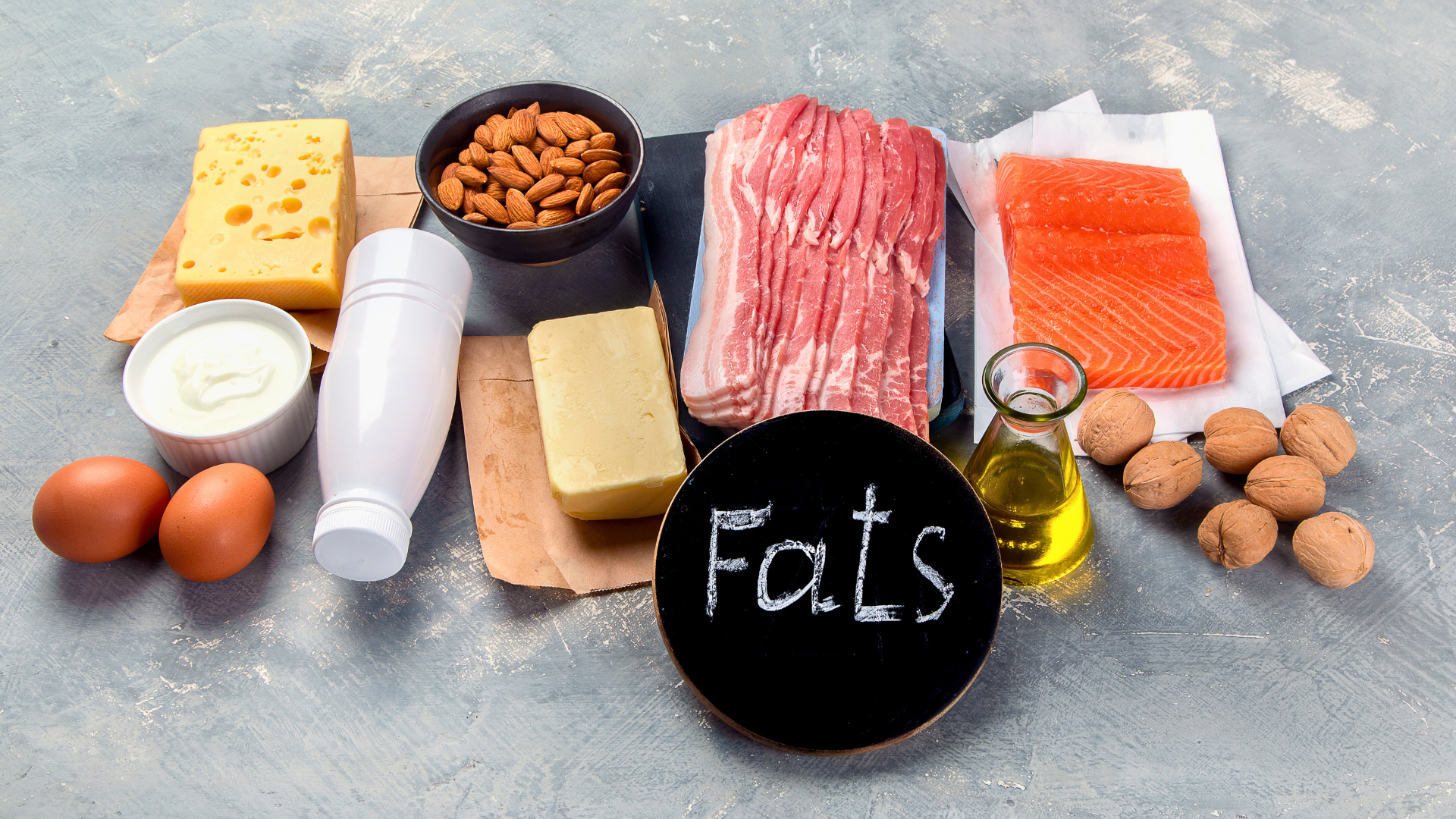Meal Timing: Recommendations For Weight Loss, Appetite Control, And Athletic Performance
Meal Timing Key Points:
- Meal timing is the strategic scheduling of eating whole foods, fortified foods, and dietary supplements.
- Meal timing helps you create an eating routine that keeps you energized, focused, and productive throughout the day.
- Correctly timing your meals can help with weight loss and appetite control, stabilize blood glucose, and improve exercise performance and recovery.
- Some challenges of appropriately timing meals include hormonal fluctuations, sleep schedules when an individual has time to exercise and work schedules.
- Re-evaluate your meal timing routine as necessary as lifestyle and exercise goals change.
What Do I Need To Know About Meal Timing?
Meal or nutrient timing is the strategic scheduling of eating whole foods, fortified foods, and dietary supplements. More specifically, a person may eat a specific nutrient in a particular amount at an exact time for a specific reason.
If that sounds like a mouthful…well…it is. To simplify things, let's create an example.
If I’m a person looking to lose weight, I would :
- Focus on eating a healthy balance of carbs, fats, and proteins.
- With a daily macronutrient breakdown of 45-65% carbs, 10-25% protein, and 20-35% fat.
- Eat 50-70% of my calories in the morning.
- Eat 20% of my calories in the afternoon
- Eat 10% of my calories in the evening.
- Timing meals and snacks in this fashion has led to weight loss.
That, in essence, is what meal timing is all about. In addition to using meal timing for exercise benefits, it can also be used for appetite control, blood sugar regulation, weight loss, muscle strength, size, and recovery.
So far, meal timing sounds swell! Next, let’s discuss why it matters.
Why Meal Timing Matters
Meal timing matters for a lot of different reasons. One of the significant reasons is it helps you maintain a better routine. This is key when trying to stick to a diet, as when dialled in, meal timing can take a lot of the guesswork out of an eating schedule.
Proper meal timing also matters because of it:
- It keeps you energized throughout the day.
- It helps you avoid blood sugar crashes to stay focused and productive.
- Regulates mood swings.
- It enables you to feel your best before exercise.
- Promotes a great night's sleep.
- Optimizes muscle and whole-body recovery.
If you’re still not convinced that hopping on the meal timing train is a good idea, let’s briefly look at the health and performance benefits before diving into the research. This is the juicy stuff you’re going to want to know!
Meal Timing Benefits
Correctly timing your meals and snacks can benefit overall health and exercise/athletic performance. These include:
- Weight Loss
- Appetite Control
- Blood Sugar Regulation
- Energy For Cardio And Endurance Exercise
- Increased Muscle Strength, Size, And Recovery
Let’s look at these benefits and see what the research recommends.
What The Research Says On Meal Timing
Fortunately for us, there isn’t a shortage of evidence regarding research on meal timing. Hundreds of clinical trials have been performed on thousands of subjects that have examined how meal timing can affect health, performance, and other variables in sedentary, obese, and athletic populations.
After reading this section, you’ll practically have your Ph.D. in meal timing.
Weight Loss
If one of your main goals is weight loss, the evidence suggests there is an ideal time to eat.
A landmark study conducted in 1997 required subjects to complete two six-week diet periods that delivered similar calories (~ 1950 kcals) and similar macronutrient composition.
In one group, the participants consumed 70% of their total daily calories during breakfast, while in the other study group, participants consumed 70% of their total daily calories during dinner.
The researchers discovered more significant weight loss in the group that ate most of their daily calories at breakfast.
More recently, a study conducted by Jakubowicz et al. had overweight and obese women consume 1400 calories each day for 12 weeks.
One group ate 50% of their daily calories (700 kcals) during breakfast, 35% during lunch (500 kcals), and 15% during dinner (200 kcals), while the other group ate the exact opposite distribution, 15% for breakfast (200 kcals), 35% for lunch (500 kcals) and 50% for dinner (700 kcals).
Approximately 2.5 times more weight was lost, and significantly greater changes in waist circumference and body mass index values were observed when most calories were consumed at breakfast.
Also, triglyceride levels decreased by 34%, more significant improvements in glucose and insulin were observed, and feelings of satiety were improved in the group that consumed most of their calories at breakfast.
The key point from these two studies indicates that if weight loss is your goal, eat more in the morning and less in the evening.
Appetite Control
Just as eating more in the morning and less in the evening helps with weight loss, the same can be said about appetite control and suppression.
A 2019 study published in the Obesity Journal demonstrates this.
For this study, researchers compared two groups of people (early eating and the control group) who ate the same three meals per day for four days but at different times. The early eating group ate the majority of their calories during the morning. The control group consumed the majority of their calories in the evening.
On the fourth day of the study, both groups had their metabolism measured…specifically calories burned and the amount of fat, carbs, and proteins burned. Both groups also rated various measures of appetite, like hunger, desire to eat, and fullness.
The researcher also measured levels of hunger hormones in each group.
The results are fascinating. The early eating group burned more calories and fat while having lower levels of the hunger hormone ghrelin. The group also reported less hunger and desire to eat than the control group.
If appetite control is ever an issue for you, eating most of your calories at breakfast and lunch is suggested.
Blood Sugar Regulation
Blood sugar spikes are no joke. Too high, and they can cause you to feel anxious and jittery. Too low can cause hypoglycemia, that horrible lightheaded and tired feeling.
It should also be noted that eating a large amount of carbs, such as a bowl of pasta, at 10 pm compared to 10 am will cause a higher blood glucose spike due to fluctuations in your circadian rhythm. Individuals should eat more carbs in the morning and less in the evening/night.
Meal timing can play a big part in helping to avoid the lows and highs of blood sugar levels and help keep it steady so you remain energized and focused.
The strategy here is to never go too long between meals and snacks and eat every 3-4 hours. This schedule will help stabilize blood glucose levels and avoid blood sugar spikes.
It also helps people avoid overeating when hungry and consume fat-laden, calorie-dense foods to satisfy their appetite.
Energy For Cardio And Endurance Exercise
Carbs are king when fueling endurance exercise, especially as intensity increases. Therefore, people can strategically time their meals/carbs when they want to run, bike, or do other endurance exercises for optimal performance. Here are the guidelines that also include a note on post-workout meal timing for recovery.
Pre Workout Meal Timing
- Eat carbs three to four hours before your planned exercise time to saturate muscle glycogen stores and elevate blood glucose. The amount you eat/need will depend on your gender, exercise levels, and goals. Getting a metabolic test done to determine your specific carb needs is recommended.
- Sixty minutes before exercise, eat a small number of carbs if needed. Focus on eating simple sugars from foods like bananas or sports drinks.
- Fifteen minutes before training, another 20-50 grams of carbohydrates can be consumed if needed and won’t cause gastrointestinal distress.
Post Workout Meal Timing
- Eat 1.2 grams of carbs per kilogram of body weight per hour for 3-4 hours to restore muscle glycogen.
- Combine the carbs with 25-30 grams of a high-quality protein like whey. This will kickstart muscle recovery and help with glycogen resynthesis.
Muscle Strength, Size, And Recovery
If you want to get stronger or put on size, meal timing for strength training differs from endurance training. The difference is that your pre and post-meal macronutrient profile will include fewer carbohydrates and more protein and amino acids.
Before and after strength training sessions, meal timing maximizes muscle protein synthesis, minimizes exercise-induced muscle damage, and facilitates short and long-term training adaptations (strength, size, power, endurance).
Pre Workout Meal Timing
- Twenty-five grams of high-quality protein or 5 grams of branched-chain amino acids and a small number of carbs. Protein can come from whole food sources or a high-quality whey protein. The BCAAs should contain at least 3 grams of leucine. 50-75 grams of carbs should be consumed. Combining protein or amino acids plus carbs will stimulate muscle protein synthesis while elevating blood glucose.
Post Workout Meal Timing
- Like the pre-workout meal, one should consume another 25 grams of protein with more carbs (100-150 grams) to help muscle recovery and replenish glycogen.
Other Common Meal Timing Questions
What Role Does The Circadian Rhythm Play in Meal Timing?
The suprachiasmatic nucleus (SCN) located in our brains is responsible for controlling our circadian rhythms. It governs metabolic processes, energy generation, and energy usage.
Irregular eating patterns can cause a separation of feedback between the SCN and food availability. This can change the metabolic processes of tissues due to several changes in gene rhythms, leading to erratic blood sugar levels and making us feel like we need to eat when we don’t. This is why it is crucial to develop a meal-timing routine.
The circadian rhythm may also explain why eating more in the morning leads to more significant weight loss and appetite control.
The research suggests:
- The calories we burn from digesting, absorbing, and metabolizing the nutrients in our food –diet-induced thermogenesis – are influenced by our circadian system and are lower at 8 p.m. than at 8 a.m.
- This can further be explained by the secretion of hormones like ghrelin and leptin (hunger hormones) that fluctuate throughout the day.
- Multiple studies have confirmed that eating most of your calories in the morning lowers hunger pangs and cravings throughout the day. This lessens your chances of overeating in the evening night.
- Finally, a study published in the Journal of Endocrinology and Metabolism discovered that people who eat a big breakfast burn twice as many calories as those who eat a large dinner.
Should I Eat Every 3-4 Hours?
Yes! As mentioned, eating every 3-4 hours will help keep blood glucose levels stable. This will help with appetite control, blood sugar spikes, and hypoglycemia and energize you throughout the day.
Should I Eat Right Before A Workout?
It depends. If eating right before a workout upsets your stomach, it might be best to avoid a small snack beforehand. On the other hand, if you need more energy before cardio or strength training, eat 50 grams of carbs fifteen minutes before starting. A banana or sports drink would be a good choice.
Should I Eat Right Before Bed?
Avoid eating any large meal three to four hours before bed. This will give your body plenty of time to digest and absorb nutrients without causing you to toss and turn all night.
Eating a large meal before bed can also cause acid reflux due to the horizontal position of the body during sleep. Stomach pain is common in individuals who have large meals close to bedtime.
Another reason to avoid large meals before bedtime is high blood sugar can minimize the release of growth hormones several times throughout the night. This can affect muscle and whole-body recovery.
If you’re hungry before bed, opt for a small snack with a small amount of fat, protein, and carbs. Cottage cheese with fruit would be a good choice.
Sample Meal Timing & Exercise Schedule
- 6 am: Wake Up
- 6:30am - 7am: Breakfast
- 9 am - 10am: Exercise
- Post-workout snack immediately after exercise
- 12 pm -12:30 pm: Lunch
- 4 pm: Snack
- 5 pm - 6 pm: Afternoon exercise if no morning exercise was performed
- 6:30 pm - 7:00 pm: Dinner
- 10 pm: Bedtime
The Bottom Line On Meal Timing
When and what you eat can affect your health and exercise performance. Therefore, following the advice above and developing a meal plan that works for you is recommended. To recap:
- Eat most of your calories in the morning for weight loss and appetite control. As the famous saying goes, eat breakfast like a king, lunch like a prince, and dinner like a pauper.
- To keep blood glucose steady, eat every 3-4 hours. This will help you avoid blood sugar spikes while keeping you energized and focused.
- Eat carbs leading up to endurance exercise to top off muscle glycogen and elevate blood glucose.
- Eat protein or amino acids with a small number of carbs before and after strength training. This will maximize muscle protein synthesis, minimize exercise-induced muscle damage, and facilitate short and long-term training adaptations.
Your meal timing plan should be re-evaluated as necessary, depending on your lifestyle and athletic goals.
References:
- Kerksick, C. M., Arent, S., Schoenfeld, B. J., Stout, J. R., Campbell, B., Wilborn, C. D., ... & Antonio, J. (2017). International Society of Sports Nutrition position stand nutrient timing. Journal of the international society of sports nutrition, 14(1), 1-21.
- Xiao, Q., Garaulet, M., & Scheer, F. A. (2019). Meal timing and obesity: Interactions with macronutrient intake and chronotype. International journal of obesity, 43(9), 1701-1711.
- Paoli, A., Tinsley, G., Bianco, A., & Moro, T. (2019). The influence of meal frequency and timing on human health: the role of fasting. Nutrients, 11(4), 719.
- Thomas, E. A., Zaman, A., Cornier, M. A., Catenacci, V. A., Tussey, E. J., Grau, L., ... & Rynders, C. A. (2020). Later meal and sleep timing predicts higher percent body fat. Nutrients, 13(1), 73.
- Moran-Ramos, S., Baez-Ruiz, A., Buijs, R. M., & Escobar, C. (2016). When to eat? The influence of circadian rhythms on metabolic health: are animal studies providing the evidence?. Nutrition research reviews, 29(2), 180-193.
- Wang, C., Almoosawi, S., & Palla, L. (2021). Relationships Between Food Groups and Eating Time Slots According to Diabetes Status in Adults From the UK National Diet and Nutrition Survey (2008–2017). Frontiers in nutrition, 8.
- Lopez-Minguez, J., Gómez-Abellán, P., & Garaulet, M. (2019). Timing of breakfast, lunch, and dinner. Effects on obesity and metabolic risk. Nutrients, 11(11), 2624.
- Ravussin, E., Beyl, R. A., Poggiogalle, E., Hsia, D. S., & Peterson, C. M. (2019). Early time-restricted feeding reduces appetite and increases fat oxidation but does not affect energy expenditure in humans. Obesity, 27(8), 1244-1254.
- Richter, J., Herzog, N., Janka, S., Baumann, T., Kistenmacher, A., & Oltmanns, K. M. (2020). Twice as high diet-induced thermogenesis after breakfast vs dinner on high-calorie as well as low-calorie meals. The Journal of Clinical Endocrinology & Metabolism, 105(3), e211-e221.
An Ounce of Prevention - Hyperion Health Blog




